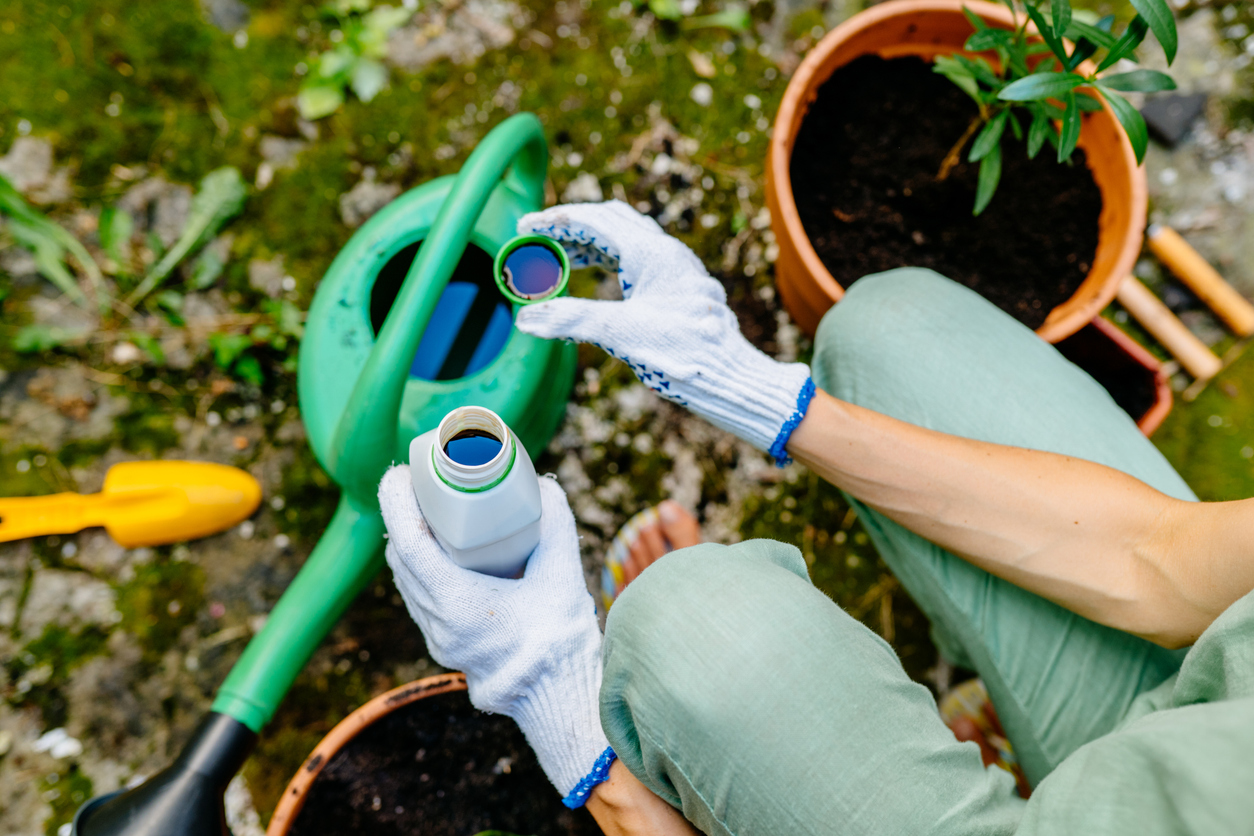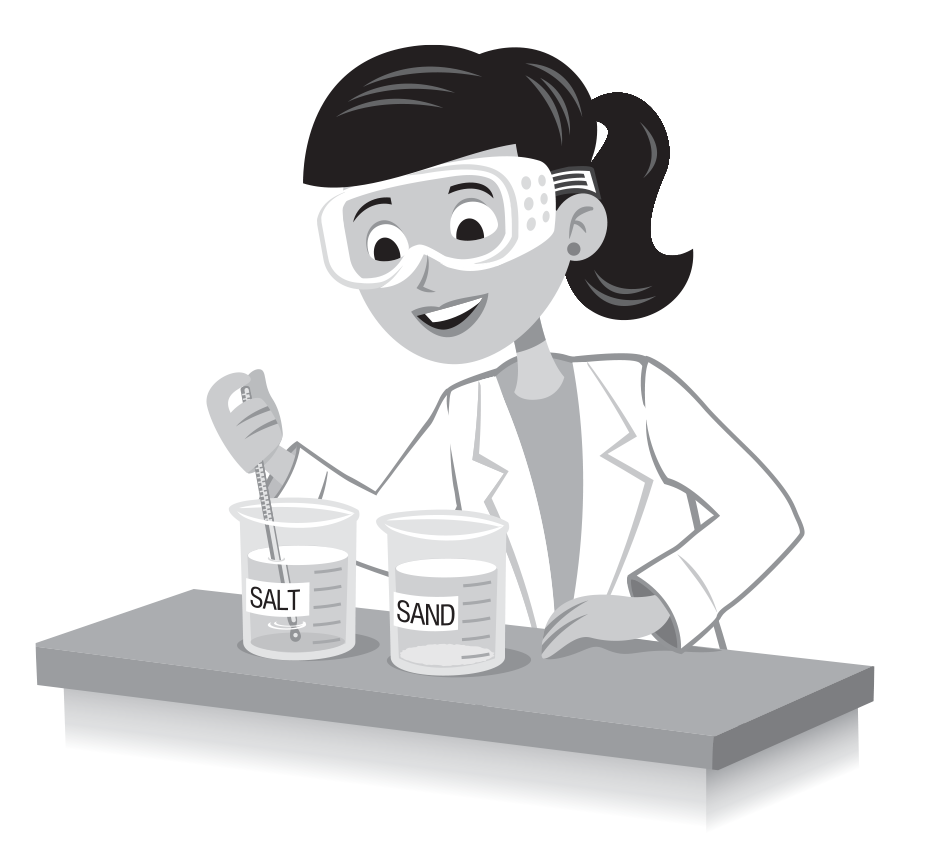The Right Solution
In this lesson, students will understand concepts about solutes, solvents, and parts per million as they learn how fertilizer solution is properly calculated and applied.

Background
Lesson Activities
Recommended Companion Resources
Credits
Author
Pamela Emery | California Foundation for Agriculture in the Classroom
Acknowledgements
This lesson was updated in 2013 with funding from California Foundation for Agriculture in the Classroom and a grant from the California Department of Food and Agriculture’s Fertilizer Research and Education Program. The Fertilizer Research and Education Program (FREP) funds and facilitates research to advance the environmentally safe and agronomically sound use and handling of fertilizer materials. FREP serves growers, agricultural supply and service professionals, extension personnel, public agencies, consultants, and other interested parties. FREP is a part of the California Department of Food and Agriculture (CDFA), Division of Inspections Services.
Editor: Shaney Emerson
Executive Director: Judy Culbertson
Illustrator: Toni Smith
Layout and Design: Nina Danner
Copy Editor: Leah Rosasco
Standards
Texas Content Area Standards
-
Principles of Agriculture, Food, and Natural Resources: 130.2.c.1
The student demonstrates professional standards/employability skills as required by business and industry. The student is expected to:
- Principles of Agriculture, Food, and Natural Resources: 130.2.c.1.B: apply competencies related to resources, information, interpersonal skills, problem solving, critical thinking, and systems of operation in agriculture, food, and natural resources.
- Principles of Agriculture, Food, and Natural Resources: 130.2.c.1.E: identify careers in agriculture, food, and natural resources with required aptitudes in science, technology, engineering, mathematics, language arts, and social studies.
-
Principles of Agriculture, Food, and Natural Resources: 130.2.c.6
The student demonstrates appropriate personal and communication skills. The student is expected to:
- Principles of Agriculture, Food, and Natural Resources: 130.2.c.6.A: demonstrate written and oral communication skills appropriate for formal and informal situations such as prepared and extemporaneous presentations.
- Principles of Agriculture, Food, and Natural Resources: 130.2.c.6.B: demonstrate effective listening skills appropriate for formal and informal situations.
-
Principles of Agriculture, Food, and Natural Resources: 130.2.c.10
The student develops technical knowledge and skills related to soil systems. The student is expected to:
- Principles of Agriculture, Food, and Natural Resources: 130.2.c.10.A: identify the components and properties of soils.
- Principles of Agriculture, Food, and Natural Resources: 130.2.c.10.B: identify and describe the process of soil formation.
- Principles of Agriculture, Food, and Natural Resources: 130.2.c.10.C: conduct experiments related to soil chemistry.
-
Principles of Agriculture, Food, and Natural Resources: 130.2.c.11
The student develops technical knowledge and skills related to plant systems. The student is expected to:
- Principles of Agriculture, Food, and Natural Resources: 130.2.c.11.B: discuss and apply plant germination, growth, and development.
-
ELA: 7.110.23.b.5
Comprehension skills: listening, speaking, reading, writing, and thinking using multiple texts. The student uses metacognitive skills to both develop and deepen comprehension of increasingly complex texts.
- ELA: 7.110.23.b.5.H: synthesize information to create new understanding
-
Science: 6.112.26.b.1
Scientific and engineering practices. The student, for at least 40% of instructional time, asks questions, identifies problems, and plans and safely conducts classroom, laboratory, and field investigations to answer questions, explain phenomena, or design solutions using appropriate tools and models. The student is expected to:
- Science: 6.112.26.b.1.A: ask questions and define problems based on observations or information from text, phenomena, models, or investigations
- Science: 6.112.26.b.1.D: use appropriate tools such as graduated cylinders, metric rulers, periodic tables, balances, scales, thermometers, temperature probes, laboratory ware, timing devices, pH indicators, hot plates, models, microscopes, slides, life science models, petri dishes, dissecting kits, magnets, spring scales or force sensors, tools that model wave behavior, satellite images, hand lenses, and lab notebooks or journals;
-
Science: 6.112.26.b.5
Recurring themes and concepts. The student understands that recurring themes and concepts provide a framework for making connections across disciplines. The student is expected to:
- Science: 6.112.26.b.5.A: identify and apply patterns to understand and connect scientific phenomena or to design solutions;
- Science: 6.112.26.b.5.G: analyze and explain how factors or conditions impact stability and change in objects, organisms, and systems.
-
Science: 6.112.26.b.6
Matter and energy. The student knows that matter is made of atoms, can be classified according to its properties, and can undergo changes. The student is expected to:
- Science: 6.112.26.b.6.A: compare solids, liquids, and gases in terms of their structure, shape, volume, and kinetic energy of atoms and molecules;
-
Science: 7.112.27.b.1
Scientific and engineering practices. The student, for at least 40% of instructional time, asks questions, identifies problems, and plans and safely conducts classroom, laboratory, and field investigations to answer questions, explain phenomena, or design solutions using appropriate tools and models. The student is expected to:
- Science: 7.112.27.b.1.A: ask questions and define problems based on observations or information from text, phenomena, models, or investigations;
- Science: 7.112.27.b.1.D: use appropriate tools such as graduated cylinders, metric rulers, periodic tables, balances, scales, thermometers, temperature probes, laboratory ware, timing devices, pH indicators, hot plates, models, microscopes, slides, life science models, petri dishes, dissecting kits, magnets, spring scales or force sensors, tools that model wave behavior, satellite images, hand lenses, and lab notebooks or journals;
-
Science: 7.112.27.b.5
Recurring themes and concepts. The student understands that recurring themes and concepts provide a framework for making connections across disciplines. The student is expected to:
- Science: 7.112.27.b.5.A: identify and apply patterns to understand and connect scientific phenomena or to design solutions;
- Science: 7.112.27.b.5.G: analyze and explain how factors or conditions impact stability and change in objects, organisms, and systems.
-
Science: 7.112.27.b.6
Matter and energy. The student distinguishes between elements and compounds, classifies changes in matter, and understands the properties of solutions. The student is expected to:
- Science: 7.112.27.b.6.D: describe aqueous solutions in terms of solute and solvent, concentration, and dilution; and
-
Science: 8.112.28.b.1
Scientific and engineering practices. The student, for at least 40% of instructional time, asks questions, identifies problems, and plans and safely conducts classroom, laboratory, and field investigations to answer questions, explain phenomena, or design solutions using appropriate tools and models. The student is expected to:
- Science: 8.112.28.b.1.A: ask questions and define problems based on observations or information from text, phenomena, models, or investigations;
- Science: 8.112.28.b.1.D: use appropriate tools such as graduated cylinders, metric rulers, periodic tables, balances, scales, thermometers, temperature probes, laboratory ware, timing devices, pH indicators, hot plates, models, microscopes, slides, life science models, petri dishes, dissecting kits, magnets, spring scales or force sensors, tools that model wave behavior, satellite images, weather maps, hand lenses, and lab notebooks or journals;
-
Science: 8.112.28.b.5
Recurring themes and concepts. The student understands that recurring themes and concepts provide a framework for making connections across disciplines. The student is expected to:
- Science: 8.112.28.b.5.A: identify and apply patterns to understand and connect scientific phenomena or to design solutions;
- Science: 8.112.28.b.5.G: analyze and explain how factors or conditions impact stability and change in objects, organisms, and systems.
-
Science: 8.112.28.b.6
Matter and energy. The student understands that matter can be classified according to its properties and matter is conserved in chemical changes that occur within closed systems. The student is expected to:
- Science: 8.112.28.b.6.A: explain by modeling how matter is classified as elements, compounds, homogeneous mixtures, or heterogeneous mixtures;
-
ELA: 6.110.22.b.5
Comprehension skills: listening, speaking, reading, writing, and thinking using multiple texts. The student uses metacognitive skills to both develop and deepen comprehension of increasingly complex texts. The student is expected to:
- ELA: 6.110.22.b.5.H: synthesize information to create new understanding
-
ELA: 8.110.24.b.5
Comprehension skills: listening, speaking, reading, writing, and thinking using multiple texts. The student uses metacognitive skills to both develop and deepen comprehension of increasingly complex texts. The student is expected to:
- ELA: 8.110.24.b.5.H: synthesize information to create new understanding
-
Math: 6.111.26.b.1
Mathematical process standards. The student uses mathematical processes to acquire and demonstrate mathematical understanding. The student is expected to:
- Math: 6.111.26.b.1.A: apply mathematics to problems arising in everyday life, society, and the workplace
- Math: 6.111.26.b.1.C: select tools, including real objects, manipulatives, paper and pencil, and technology as appropriate, and techniques, including mental math, estimation, and number sense as appropriate, to solve problems
-
Math: 6.111.26.b.3
Number and operations. The student applies mathematical process standards to represent addition, subtraction, multiplication, and division while solving problems and justifying solutions. The student is expected to:
- Math: 6.111.26.b.3.D: add, subtract, multiply, and divide integers fluently
- Math: 6.111.26.b.3.E: multiply and divide positive rational numbers fluently
-
Math: 6.111.26.b.4
Proportionality. The student applies mathematical process standards to develop an understanding of proportional relationships in problem situations. The student is expected to:
- Math: 6.111.26.b.4.H: convert units within a measurement system, including the use of proportions and unit rates
-
Math: 7.111.27.b.1
Mathematical process standards. The student uses mathematical processes to acquire and demonstrate mathematical understanding. The student is expected to:
- Math: 7.111.27.b.1.A: apply mathematics to problems arising in everyday life, society, and the workplace
- Math: 7.111.27.b.1.C: select tools, including real objects, manipulatives, paper and pencil, and technology as appropriate, and techniques, including mental math, estimation, and number sense as appropriate, to solve problems
-
Math: 7.111.27.b.3
Number and operations. The student applies mathematical process standards to add, subtract, multiply, and divide while solving problems and justifying solutions. The student is expected to:
- Math: 7.111.27.b.3.A: add, subtract, multiply, and divide rational numbers fluently
- Math: 7.111.27.b.3.B: apply and extend previous understandings of operations to solve problems using addition, subtraction, multiplication, and division of rational numbers
-
Math: 7.111.27.b.4
Proportionality. The student applies mathematical process standards to represent and solve problems involving proportional relationships. The student is expected to:
- Math: 7.111.27.b.4.E: convert between measurement systems, including the use of proportions and the use of unit rates
-
Math: 8.111.28.b.1
Mathematical process standards. The student uses mathematical processes to acquire and demonstrate mathematical understanding. The student is expected to:
- Math: 8.111.28.b.1.A: apply mathematics to problems arising in everyday life, society, and the workplace
- Math: 8.111.28.b.1.C: select tools, including real objects, manipulatives, paper and pencil, and technology as appropriate, and techniques, including mental math, estimation, and number sense as appropriate, to solve problems
-
Technology Applications: 126.17.c.1
Computational thinking--foundations. The student explores the core concepts of computational thinking, a set of problem-solving processes that involve decomposition, pattern recognition, abstraction, and algorithms. The student is expected to:
- Technology Applications: 126.17.c.1.B: analyze the patterns and sequences found in visual representations such as learning maps, concept maps, or other representations of data
